“The apartment was in a horrendous state but I am a great believer in the ‘mood’ of a building and this place felt so calm. It also had lovely open views and is by a river, which equals good feng shui, so that helped seal the deal.”
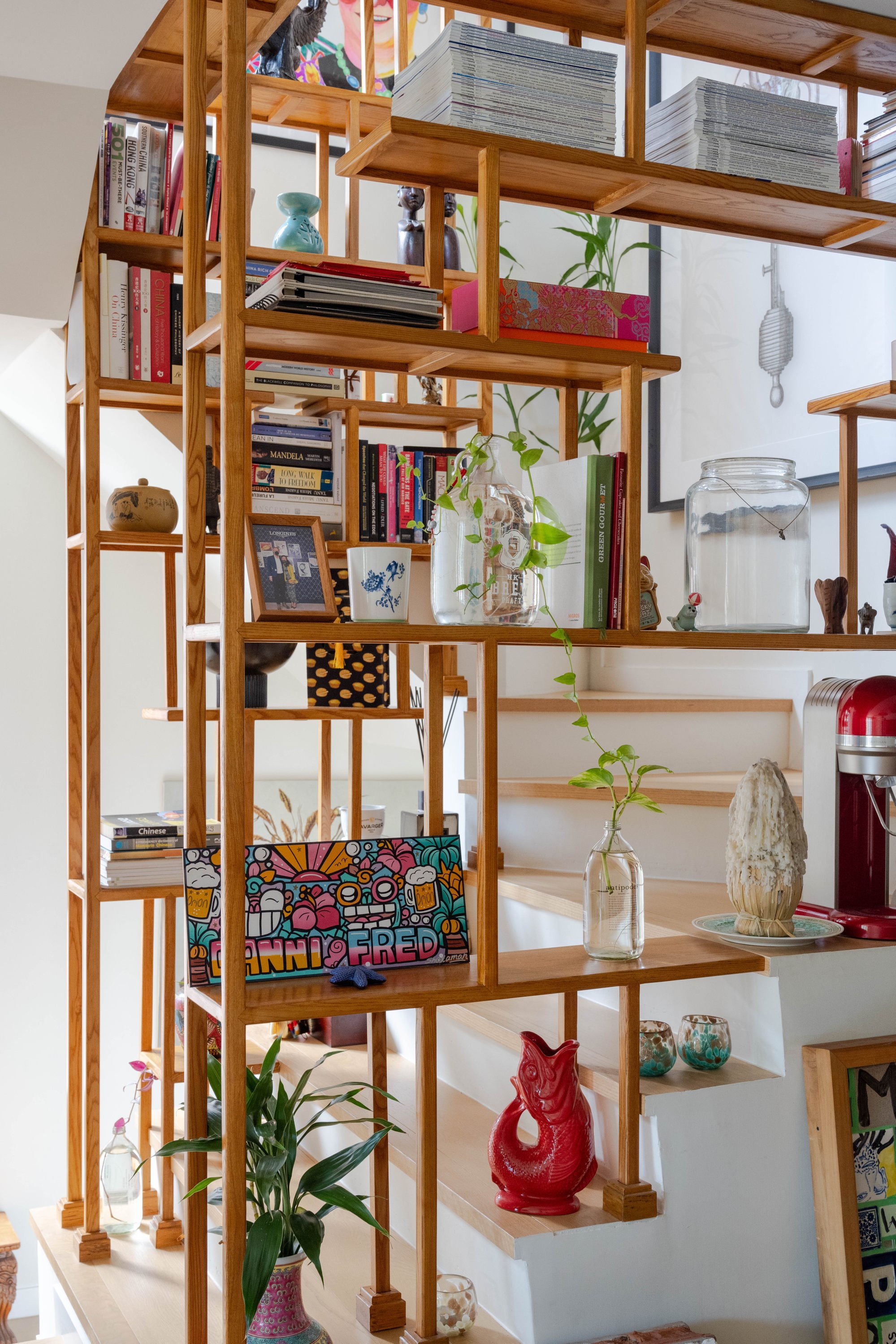
There was no question about a full renovation but before work began, the couple threw a graffiti party, inviting friends to visit and express themselves in paint wherever they felt like it. (A chunk of that original wall, featuring Rolli and Zhao’s handprints, is now on display in the dining area.)
The couple asked the design team at Studio Amal (studioamal.com) to come up with initial ideas through 3D renderings. But both being creative and interested in interior design, they managed the project themselves, despite working full time, and figured out the design as the project developed, employing local workmen to do the heavy lifting.
“Rather than being discouraged by the apartment’s run-down state, we saw enormous potential in the space and decided to bring it back to life,” recalls Rolli, who comes from Switzerland and also works in finance.
We wanted the space to have a touch of cultural flair while also reflecting our personal taste and style
“We wanted to make the space our home and poured our hearts into every detail to ensure that the apartment reflected our unique vision. We even camped in the flat to run through some design ideas during the design phase.”
Zhao describes the project as having evolved in style rather than being set in stone from the start. She and Rolli wanted to incorporate elements of traditional Chinese design, such as patterned porcelain lamps, stools and vases, but were mindful not to go overboard.
The green window frames, which they did not change, were a starting point for their interior palette.
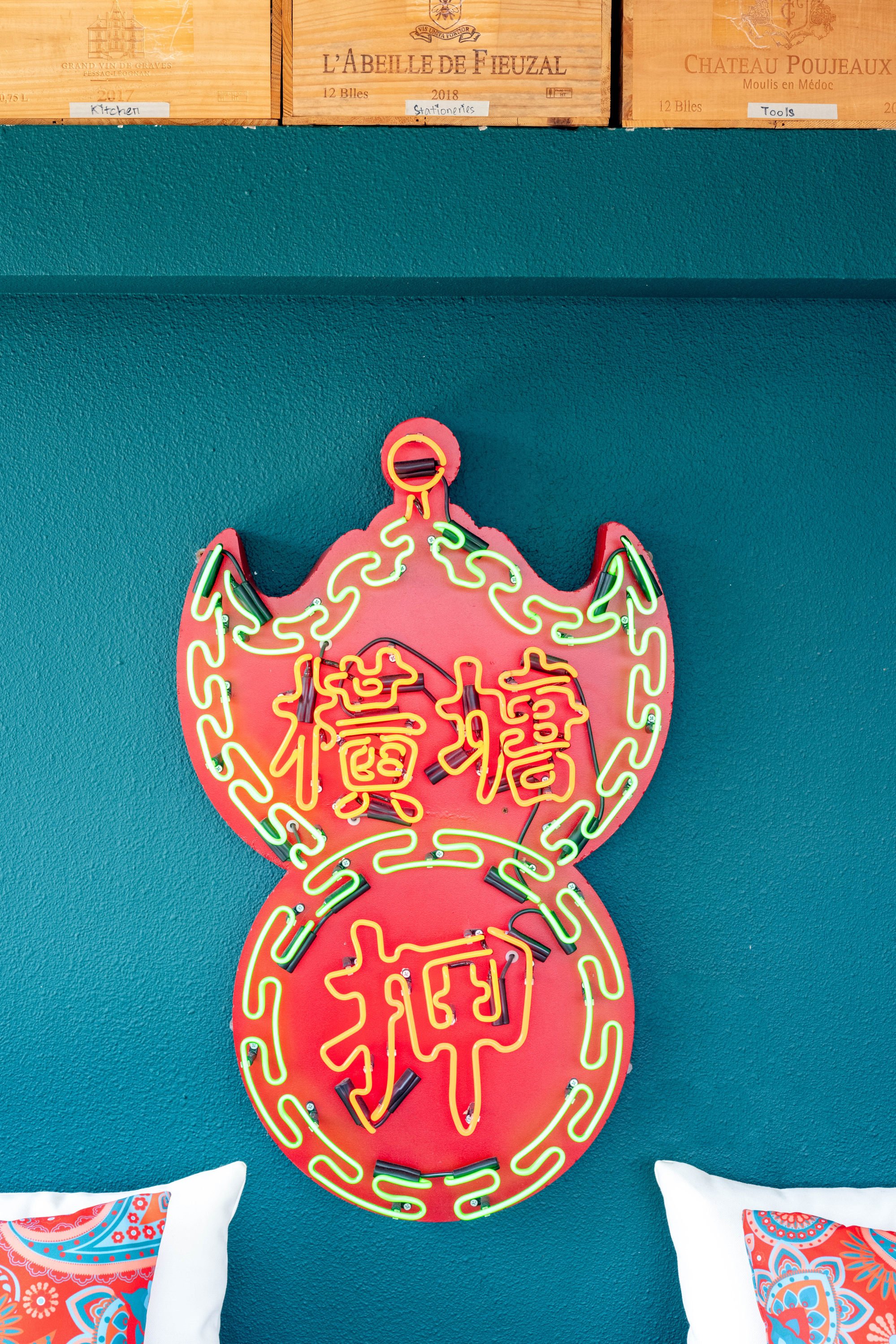
“Green features prominently in Chinese decor and echoes our view outside,” says Zhao. “We wanted the space to have a touch of cultural flair while also reflecting our personal taste and style.”
They injected an additional sense of historic character into their two-bedroom, one-bathroom home with the inclusion of custom-made latticework doors, which are rooted in traditional Chinese design but do not feel outdated.
They balanced these and other classic wooden pieces with colourful soft furnishings, brushed brass and contemporary art, including works by Hong Kong artists Wilson Shieh Ka-ho, Angela Su, Ghost Mountain Field and Chow Ciao Chow, which add another layer of creativity and charm to the flat.
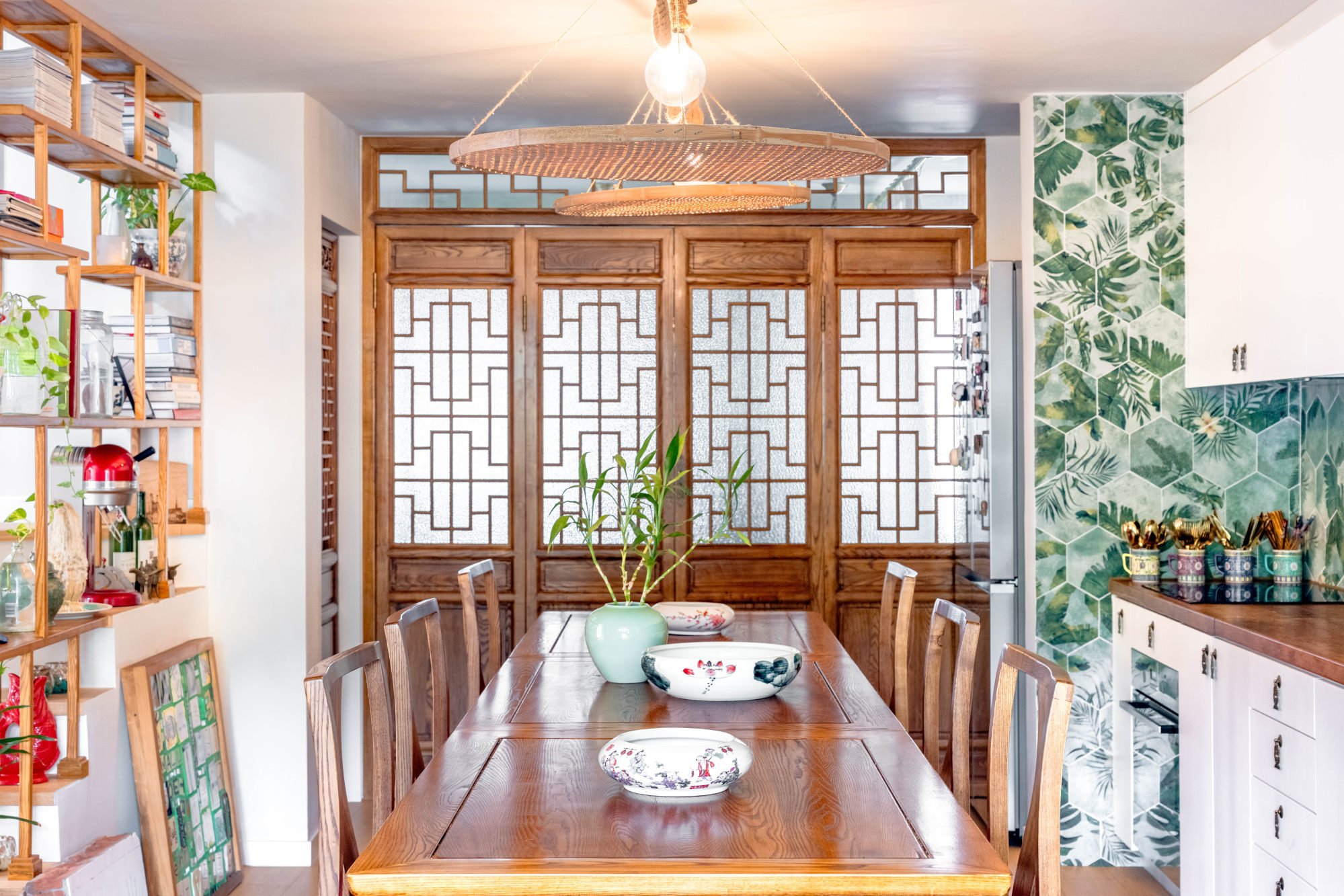
Loath to pay exorbitant designer prices for furniture and accessories but wanting something more original than homeware chains offered, the couple spent hours on Pinterest and Taobao sourcing more budget-friendly items.
They also came up with ingenious ideas to make run-of-the-mill items special, adding retro brass fittings to standard kitchen cupboard doors and repurposing a door knocker by screwing it onto the dishwasher facade. The patterned sinks in the bathroom were originally ceramic fishbowls.
They asked the Taobao supplier to drill drainage holes into them and coordinated pipes and taps from other sources. They also created quirky ceiling lights featuring hats, birdcages and winnowing trays (see Tried + tested below).
It is so tranquil here, it often feels as though we’re not living in Hong Kong
It was a bigger project than either of them had anticipated thanks to delayed shipments and an erratic workforce because of the pandemic as well as the apartment’s location in a no-car zone, which made it harder to transport building materials and furniture. However, in 2021, six months after renovations had begun, they moved in.
“Our lives have changed for the better. We love entertaining and now have room for guests who usually stay at weekends,” says Zhao.
“We have hiking trails and beaches on our doorstep and we can hear the cicadas and feel the breeze, luxuries we didn’t have in Mid-Levels. It is so tranquil here, it often feels as though we’re not living in Hong Kong.”
Living area
The sofa, cushions and ceramic stools came from Taobao (taobao.com). Above the sofa is a painting by an unknown artist that was bought from Dafen Oil Painting Village, in Shenzhen (dafenvillageonline.com). The Sinnerlig bamboo pendant lamps were from Ikea (ikea.com.hk).
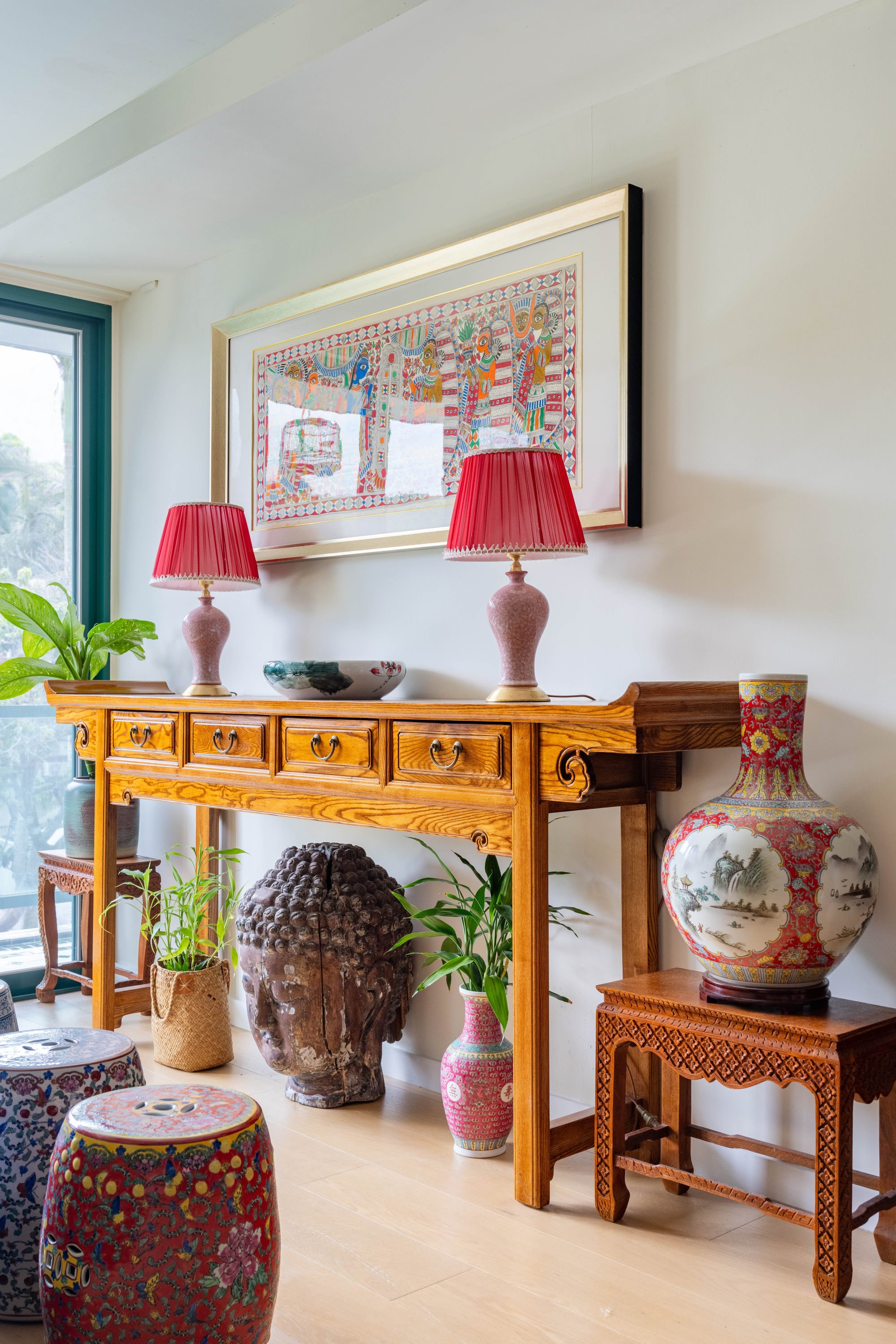
Living room detail
An Indian painting on papyrus by an unknown artist was gifted to Zhao years ago by a client. The console table was sourced through Taobao and the teak-wood stools on either side of it were part of an altar, which Zhao found in a shop near the Grand Palace in Bangkok, Thailand, and restored.
All the ceramics came from Ceramic Connection, in Jingdezhen, a well-known ceramics hub, that sells on Taobao. The wooden Buddha head was bought in a clearance sale in SoHo. The pink table lamps are years old.
Dining area
The dining table, chairs and latticework panels (behind which is the bathroom) all came from Yifeng, while the ceramics were from Ceramic Connection.
The artwork propped against the shelving unit is Wall of Poetry, by Isaiah Zagar, bought from Philadelphia’s Magic Gardens (phillymagicgardens.org).
The wall tiles in the kitchen were from Magic Garden Tiles via Taobao; the cabinet fittings and ceramics, used to store cutlery, were all bought through the Chinese shopping platform, too.

Main bedroom
The bed, pendant lamp, mirror and green ginger jar were all from Taobao while the dressing table and green wardrobe were by Yifeng. The Buddha statue was found in an antiques shop in Sheung Wan. The stool was part of the same altar as the living room pieces.
Bathroom
The couple had a concrete bath/shower built to order. The pendant lamp, mirror, basket, floor tiles and shower hardware were all sourced through Taobao.
Rolli and Zhao made the sinks out of porcelain fishbowls from Ceramics Connection and the wooden sink stand came from Yifeng. The Oletto basin taps were from Kraus via Amazon.com.
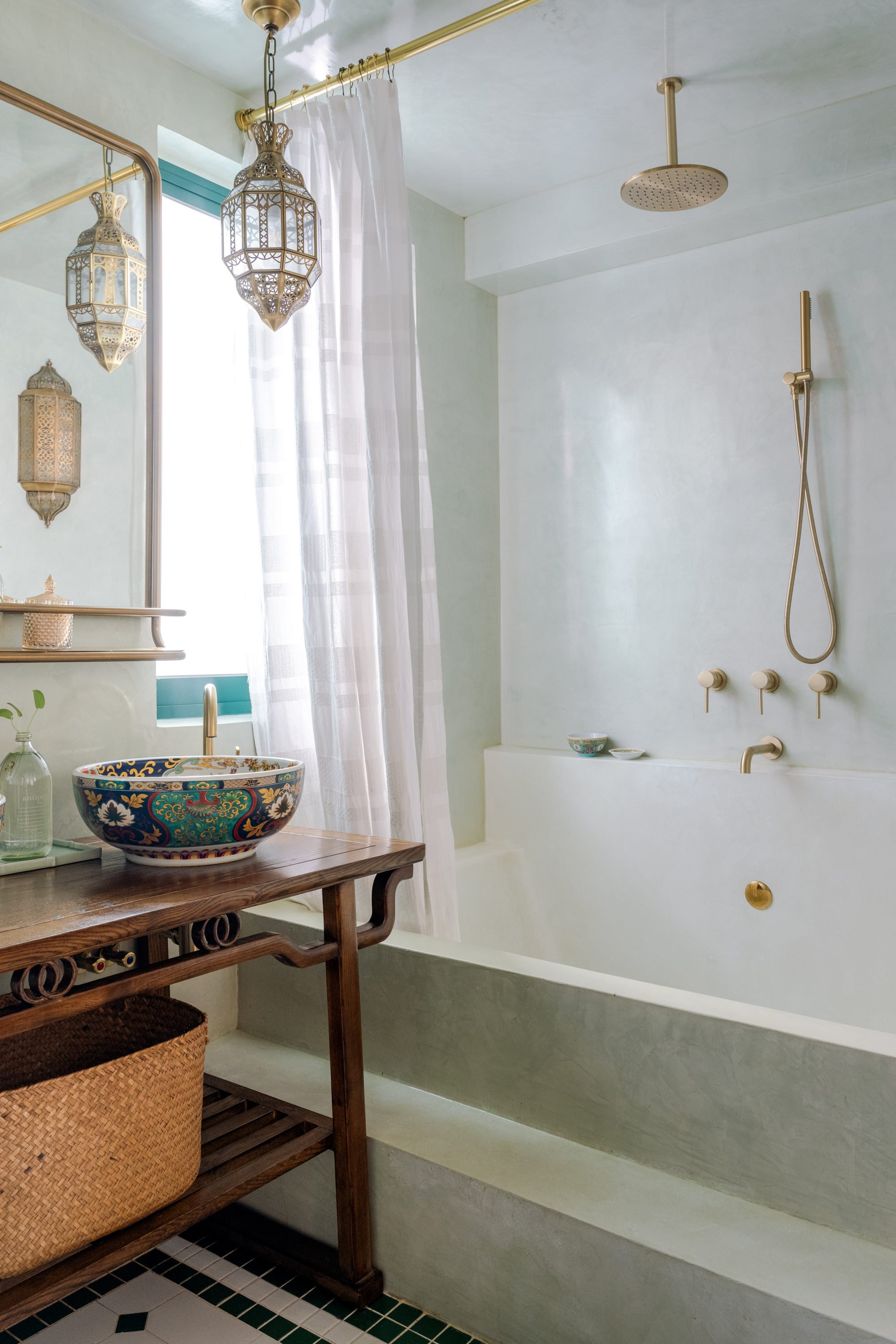
Stairwell
Art of Tomorrow (2013), by Angela Su, takes pride of place in the stairwell. It is one half of a diptych bought from Sotheby’s (sothebys.com) with a friend, who has the second piece.
On the left-hand wall is a colourful portrait of Frédéric Rolli’s parents by artist Chow Ciao Chow (instagram.com/chowciaochow), which DanNi Zhao commissioned as a gift.
On the right-hand wall is an artwork titled Mother and Child (2013), bought from Dafen Oil Painting Village. The hat lights came from Bo Ji Zhao Ming via Taobao.
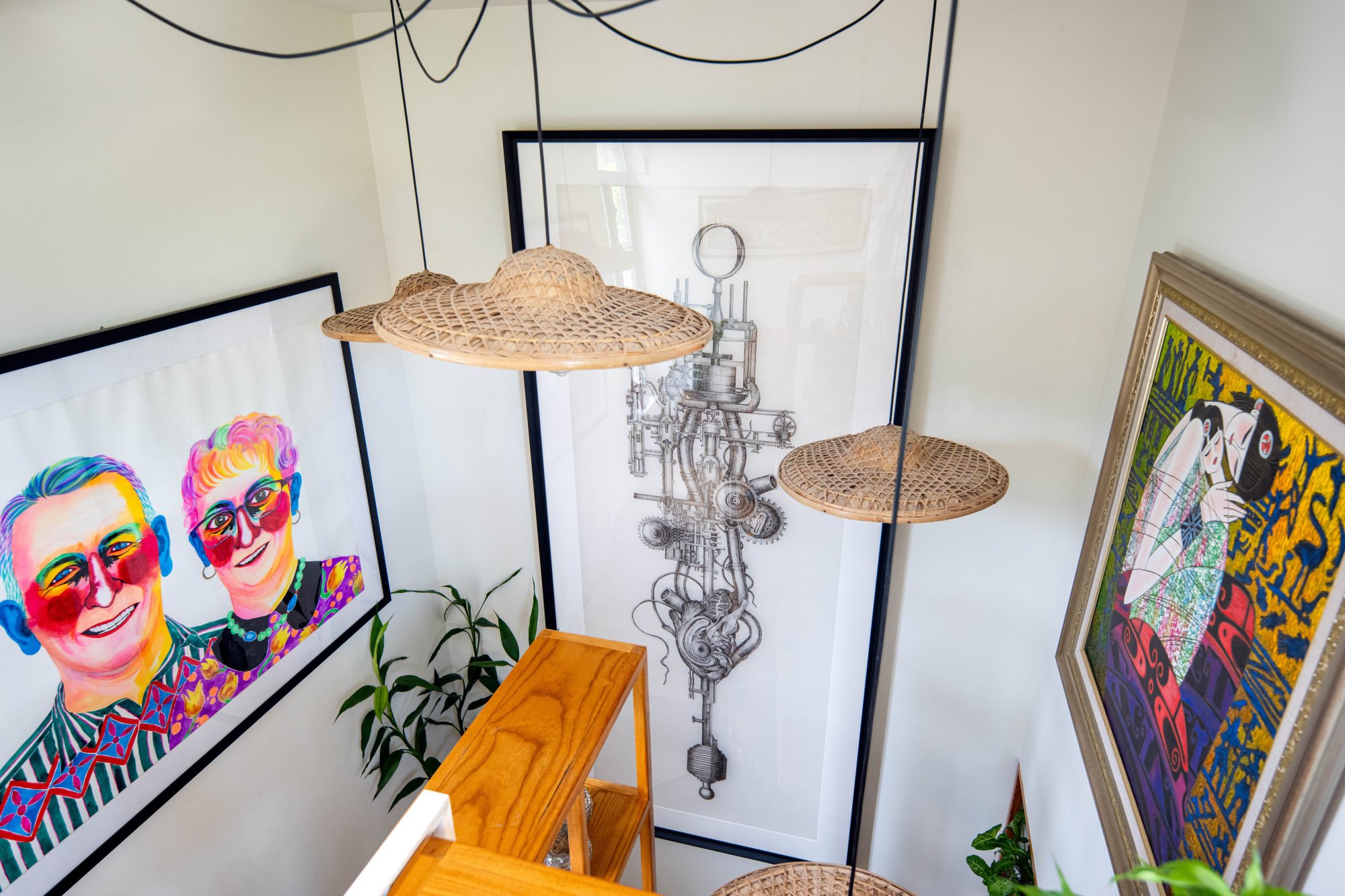
Kitchen
The wall tiles were from Magic Garden Tiles via Taobao; the cabinet fittings and ceramics, used to store cutlery, were all bought through the Chinese shopping platform, too. The matching blue Hong Kong toile teapot and cup were by Mariko Jesse for Faux Home (faux-home.com).
Rooftop lounge
The sofa, cushion fabric and ceramic stools in the rooftop lounge were all sourced through Taobao (taobao.com).
Zhao and Rolli made the lights by buying the birdcages from Taobao supplier Xi Lan Bamboo from Qingdao in Shandong Province, which is known for birdcage craft, and the waterproof lights from a supplier in Zhongshan.
The corner screen was custom-made by Yifeng, a wood furniture supplier with an online presence on Taobao as well as a showroom in Gube Industrial Zone, Zongshan Sanxiang Village.
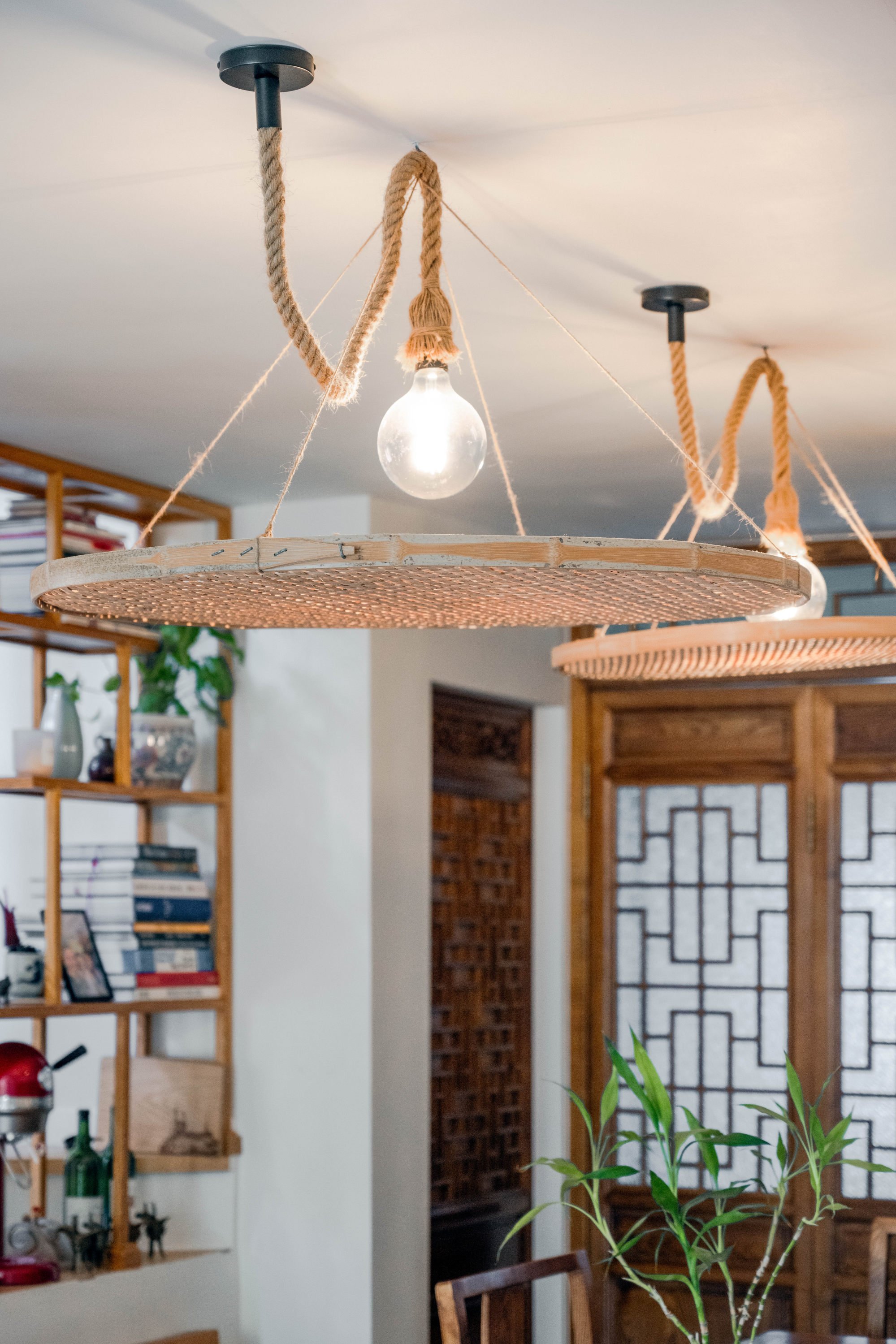
Stairway shelves
The shelving unit was made by Yifeng, a wood furniture supplier with an online presence on Taobao. The red fish was found in a shop in Sai Kung. Leaning against the bottom steps is a remnant of an old wall with Rolli and Zhao’s handprints.
Rooftop detail
Following Zhao and Rolli’s designs, City Neon Light on Taobao made the neon pawn shop sign, which decorates a wall in the rooftop lounge. The wine boxes, used to store practical but non-decorative items, were bought from Carousell (carousell.com).
Tried + tested
Instead of removing wrongly placed ceiling roses above the dining table, Frédéric Rolli and DanNi Zhao kept them as they were and installed sturdy hooks nearby on which they looped rope light fittings.
They then used jute string to hang inexpensive winnowing trays from Taobao beneath the lights, thereby creating two eye-catching pendants.

